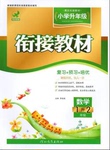题目内容
On the surface, the Hudson River is looking good. The sun on a spring morning shines on the water, off bridges and boats. The blue crabs(蟹)are big,and the striped bass(条紋^) are bigger. On the surface, all these would probably make you think the Hudson was about as healthy as it has been since Indian times.
Sadly,it isn't. A study by the environmental group River-keeper examined an important in?dicator of life of any river,fish,and found discouraging news. Ten of 13 species it examined are reducing, and one―the great and delicious shad(西鲱)一is at a historic low.
The report blames the usual suspects and a few new ones. The river is getting warmer,and the heat helps starve the water of oxygen. Power plants kill untold millions of fish when they suck up river water to cool their machinery. Invasive species, dirty water and fertilizer runoff and over-fishing in the ocean,where species like shad spend much of their lives,all take their toll.
Not all fish are struggling. Striped bass are on the increase, as are bluefish and spot-tail shiners. But with other species moving slowly downwards, signs point to a sicker, less stable Hudson ecosystem than many had imagined.
River-keeper's report shows how little we understand the biology of one of the country's most historic and important estuaries (河口,江口). It is a reminder that even the hardest-fought conservation(对自然环境的保护)victories may look like the easy ones,and that self-satisfaction can be the death of environmental progress.
( ) 5. As a whole, the purpose of the first paragraph is to
A. arouse our interest in the topic of the passage
B. get us to know the Hudson River is still pretty healthy
C. sing high praise for the contribution of the local people
D. call on us to protect the Hudson River
( ) 6. What's the auther's attitude towards the present situation of the Hudson River?
A. Optimistic. B. Pessimistic.
C. Positive. D. Desperate.
( ) 7. Which of the following fish seems NOT to enjoy the life in the Hudson River?
A. Bluefish. B. Shad.
C. Striped bass. D. Spot-tail shiners.
( ) 8. The word "starve" in the third paragraph probably means
A. get hungry B. fight against
C. take in D. get out
5-8 ABBD
B篇通过对鱼的分析来阐述哈得逊河的环保问题。
5. A写作意图题文章第一段通过对"the blue crabs"和"the striped bass"的描述,特另l| 是"all these would probably make you think the Hudson was about as healthy as it has been since Indian times."这句话,引起读者对话题的兴趣。
6. B态度推断题通过文章最后一句"It is a reminder that even the hardest-fought conserva?tion victories may look like the easy ones,and that self-satisfaction can be the death of environmental progress."可以看出作者对现状并不满意,但并不是绝望。
7. B细节推理题通过"Striped bass are on the increase, as are bluefish and spot-tail shiners."此句,反向推断即可。8. D词义猜测题此处是指把水里的氧气都耗尽。

 鹰派教辅衔接教材河北教育出版社系列答案
鹰派教辅衔接教材河北教育出版社系列答案